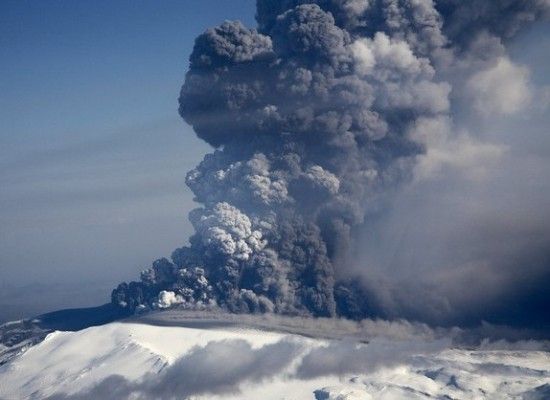
(From www.huffingtonpost.com)

(From www.examiner.com)
On Wednesday April 14th, the Eyjafjallajokull volcano in Iceland erupted and deposited large quantities of volcanic ash in the earth's upper atmosphere. The ash contents include approximately 25% Fine Particulate Matter that are less than 10 microns in size, and these small particles can reach the lower respiratory tract and cause respiratory irritation, especially in individuals with chronic respiratory diseases such as asthma or emphysema. Currently, the European Air Quality Monitoring Network with stations all across the continent is tracking air quality measurements. No elevated particle levels have been recorded, but fore-casted rain may affect these levels.

(From www.nytimes.com)
Of large concern is also the impact the ash cloud has upon global travel through Europe. Eurocontrol, based in Brussels, coordinates air-traffic management across the continent and reported that by the end of Tuesday April 20th, 95,000 flights will have been canceled due to the ash cloud. In addition to mainstream commerce and leisure travel, this ban on flights throughout Europe has had enormous consequences on the delivery and transportation of health supplies and materials in and out European cities. For example, the German Foundation for Organ Transplant has had to alter scheduled deliveries of hearts, lungs, and livers, and is working with Eurotransplant to coordinate ground deliveries of vital organs.
The threats of the volcanic ash upon aircraft are real and not merely hypothetical. An article published April 19th in the New York Times states:
From 1953 to 2008, just 89 planes were reported to have encountered an ash cloud, said Denis Chagnon, a spokesman for the International Civil Aviation Organization in Montreal.
But the real perils were demonstrated in June 1982, when a British Airways Boeing 747, flying to Australia from Malaysia, flew directly into an erupting volcano’s ash cloud.
One after the other, all four engines shut down within minutes, turning the aircraft into a overweight glider. After 15 harrowing minutes, the plane had dropped about 20,000 feet, enough for the plane to fly under the ash cloud and allow for clean air to feed the jet turbines. At that point, the crew was able to restart the engines, which allowed for an emergency landing.
Another Boeing 747, belonging to Singapore Airlines, lost power in three of its four engines when it hit ash from the same eruption. And in December 1989, all four engines of a three-month-old KLM Boeing 747 shut down when the plane encountered ash from Mount Redoubt. The plane descended to 12,000 feet from 25,000 feet before the crew was able to restart two of the engines.



No comments:
Post a Comment